Original | Odaily Planet Daily
Author | CryptoLeo
In early August, listed companies began to release their Q2 2025 financial reports, among which Strategy (MSTR) stood out. Under the leadership of Michael Saylor, Strategy achieved a record high operating revenue of approximately $14.03 billion in Q2 2025, a staggering increase of 7106% compared to the same period last year. Additionally, the unrealized gains from the cryptocurrency assets held by Strategy amounted to $14 billion.
All of this is based on Saylor's decision to choose BTC as a reserve. From Strategy and Metaplanet to various companies transforming into crypto reserves, the types of reserves have rapidly emerged within just a few months, ranging from BTC to ETH, BNB, SOL, and SUI. Just as the development of hot sectors in crypto evolves, the types of crypto token reserves and companies have also surfaced. For retail investors, besides investing in the tokens included in the reserves, they can also buy shares of reserve companies. To this end, Odaily Planet Daily has compiled and evaluated commonly used data query websites/tools for crypto reserve companies, as follows:
Comprehensive Query Websites
1. Blockworks
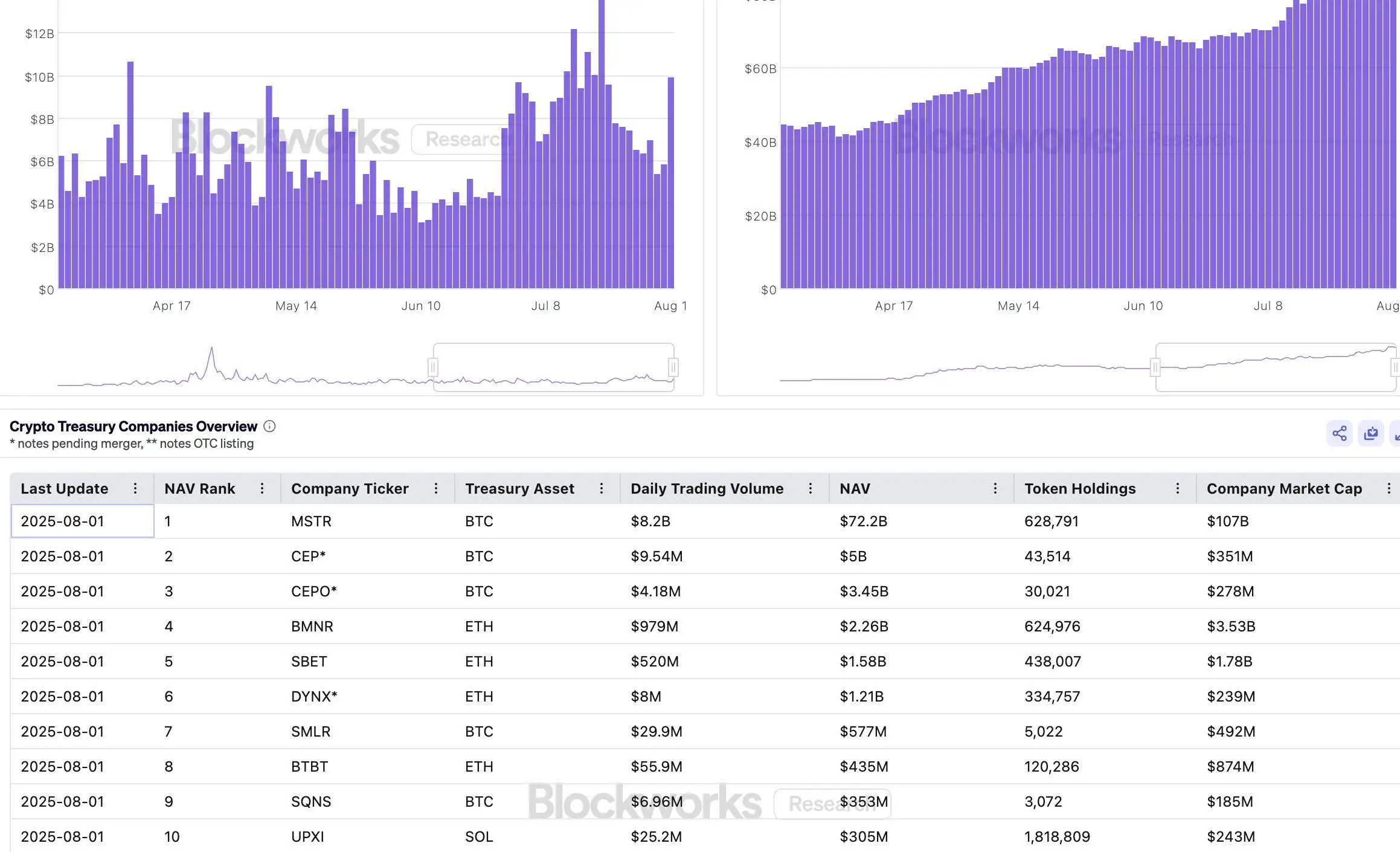
Introduction: Blockworks' data on crypto reserve companies covers BTC, ETH, SOL, HYPE, XRP, SUI, and multi-token reserves, recording a total of 26 crypto reserve companies. The data columns include trading volume, crypto net asset value (NAV), and other key indicators of crypto financial companies. Users can clearly query:
The stock ticker of crypto reserve companies, the names of reserve tokens, daily trading volume of stocks, NAV, the number of tokens held, and the company's market capitalization. Blockworks also ranks reserve companies based on the net value of their held crypto assets. (Its stock data is sourced from Polygon.io—a provider of API services for U.S. stock market data.)
Blockworks has also created data tables for the above data, and besides the mentioned data charts, it is worth noting that Blockworks has also created an MNAV data table, providing data trends for M (asset net value multiple), including the M value of enterprise value and company market capitalization. M (market capitalization) is the total market capitalization of the company divided by the value of crypto assets, while M (enterprise value) is the company market capitalization + total debt - cash divided by the value of crypto assets. For example, Strategy's M (market capitalization) is 1.48, and Strategy's M (enterprise value) is 1.68. M is also a risk indicator of the health of crypto reserves.
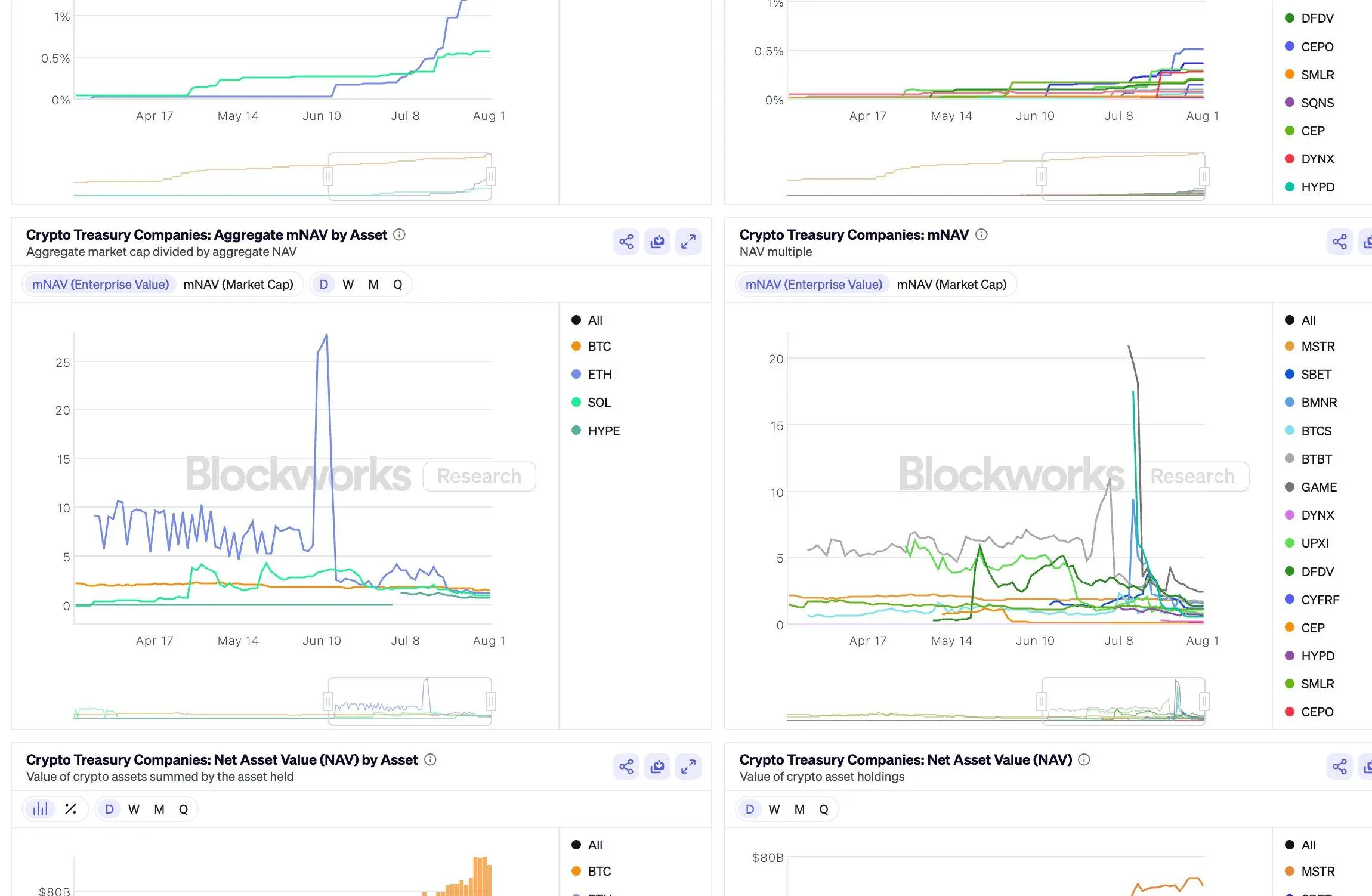
Additionally, Blockworks provides a data table for the company's net asset value premium (market capitalization minus the value of crypto reserves) (for example, Strategy's net asset value premium is $34.36 billion). There is also a total net asset value premium data table for each type of crypto reserve company (for example, the net asset value premium for BTC reserve companies is $26.29 billion), as some BTC reserve companies have stock values lower than the value of their held crypto assets, meaning their M is below 1.
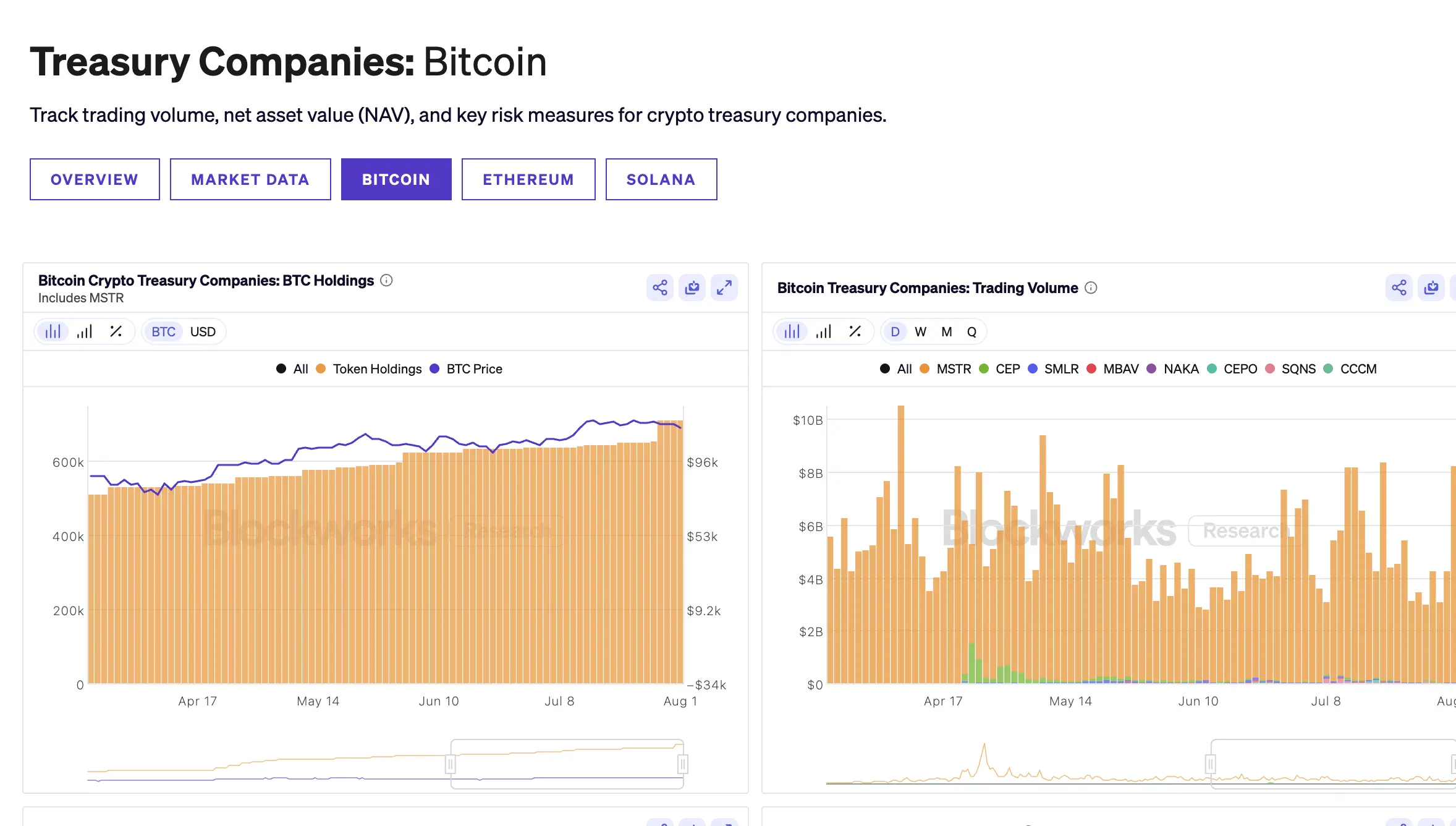
Evaluation: Overall, Blockworks provides comprehensive data, with detailed individual data and risk indicators, and a relatively large number of recorded crypto reserve companies. Its asset net value premium and MNAV data tables can intuitively show the risk indicator data of crypto reserve companies. A slight drawback is that this website only provides stock tickers rather than full company names, requiring users who are not familiar with U.S. stocks to look up the stock ticker first to understand the company.
2. Delphi Digital
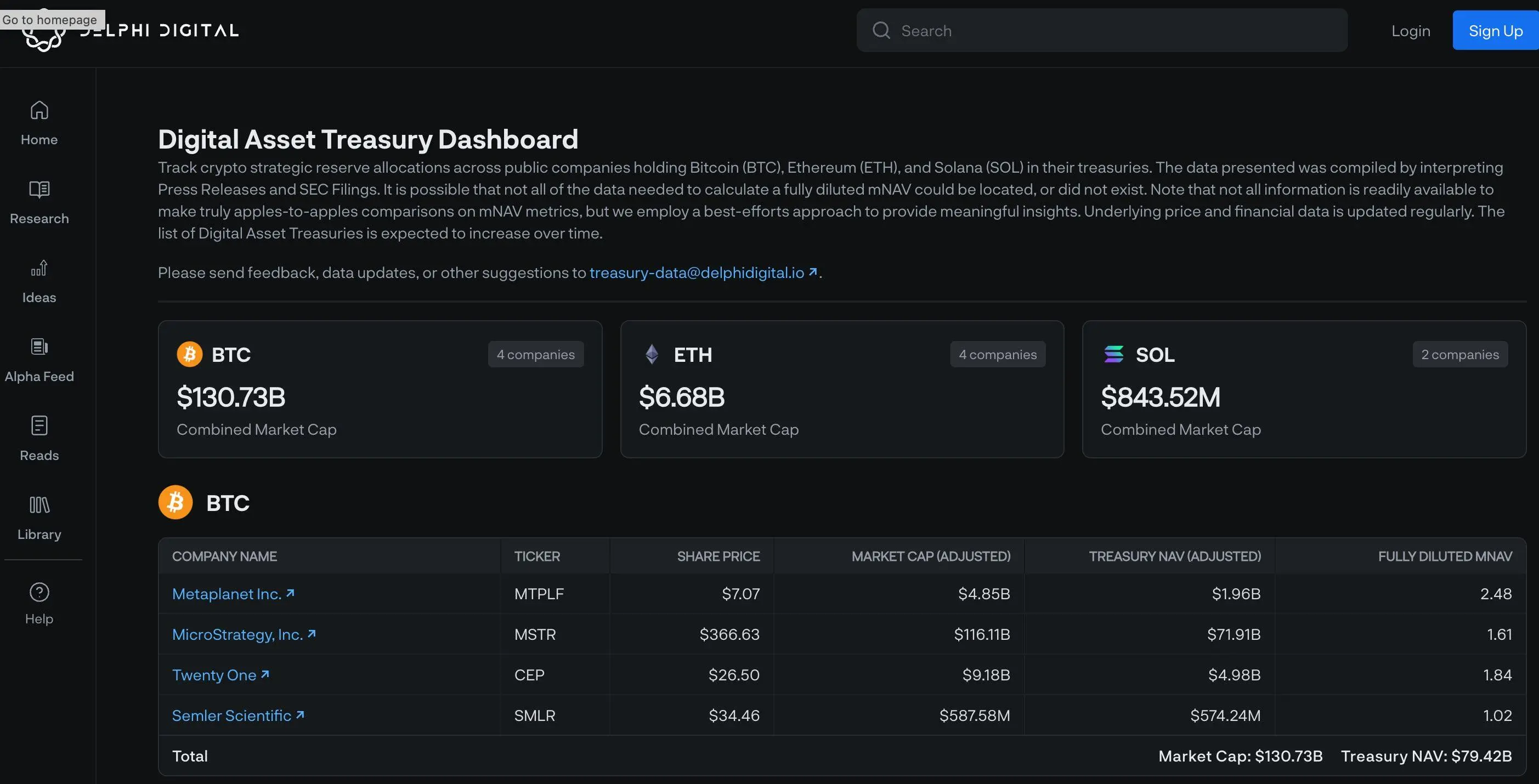
Introduction: Delphi Digital's data table for crypto reserve companies includes BTC, ETH, and SOL, but the number of recorded companies is limited. It includes 4 BTC reserve companies (Strategy, Metaplanet, Twenty One, and Semler Scientific), 4 ETH reserve companies (Sharplink Gaming, BitMine Immersion Tech, BTCS Inc, and Bit Digital Inc), and 2 SOL reserve companies (DeFi Development Corp and Upexi). Delphi Digital's data table includes company name, stock ticker, stock price, market capitalization, value of crypto assets, and M (the M value mentioned above). (Data is sourced from SEC and news announcements.)
Evaluation: Delphi Digital's data table is relatively simple, only allowing for the lookup of some earlier or well-known crypto reserve companies. It does not include data for some newly established reserve companies, and compared to Blockworks, Delphi Digital's MANV data is also relatively singular, making it just an ordinary option for querying crypto reserve company data.
3. The Block

Introduction: The Block's data table for crypto reserve companies is divided into four parts: BTC, ETH, SOL, and comprehensive crypto reserve enterprise data, recording a total of 26 crypto reserve companies. Its data covers mainstream crypto reserve companies, and the data table includes: market capitalization of crypto reserve companies, market value of tokens held by crypto reserve companies, individual mainstream reserve company's token holdings, and total holdings of individual tokens by reserve companies.
Evaluation: The charts are not as good as Blockworks. Some crypto reserve data is sourced from the DUNE platform, so the holdings are updated slowly, and the data is not particularly accurate.
4. cryptotreasuries.info

Introduction: cryptotreasuries.info is divided into three categories of crypto reserves: BTC, ETH, and SOL, but no companies are recorded for SOL. The platform has recorded a relatively large number of BTC reserve companies, and it also provides price trends for related tokens.
The data columns of the platform include: company name and stock ticker, token holdings and total value, and per-share BTC earnings and MNAV for 30/90 days and 1 year.
Evaluation: cryptotreasuries.info is the platform with the most recorded BTC reserve companies among all query tools today, but it has fewer ETH reserves, and there are currently no SOL reserve companies (not updated). The platform has also created comparison charts for reserve companies' token accumulation data and stock price trends.
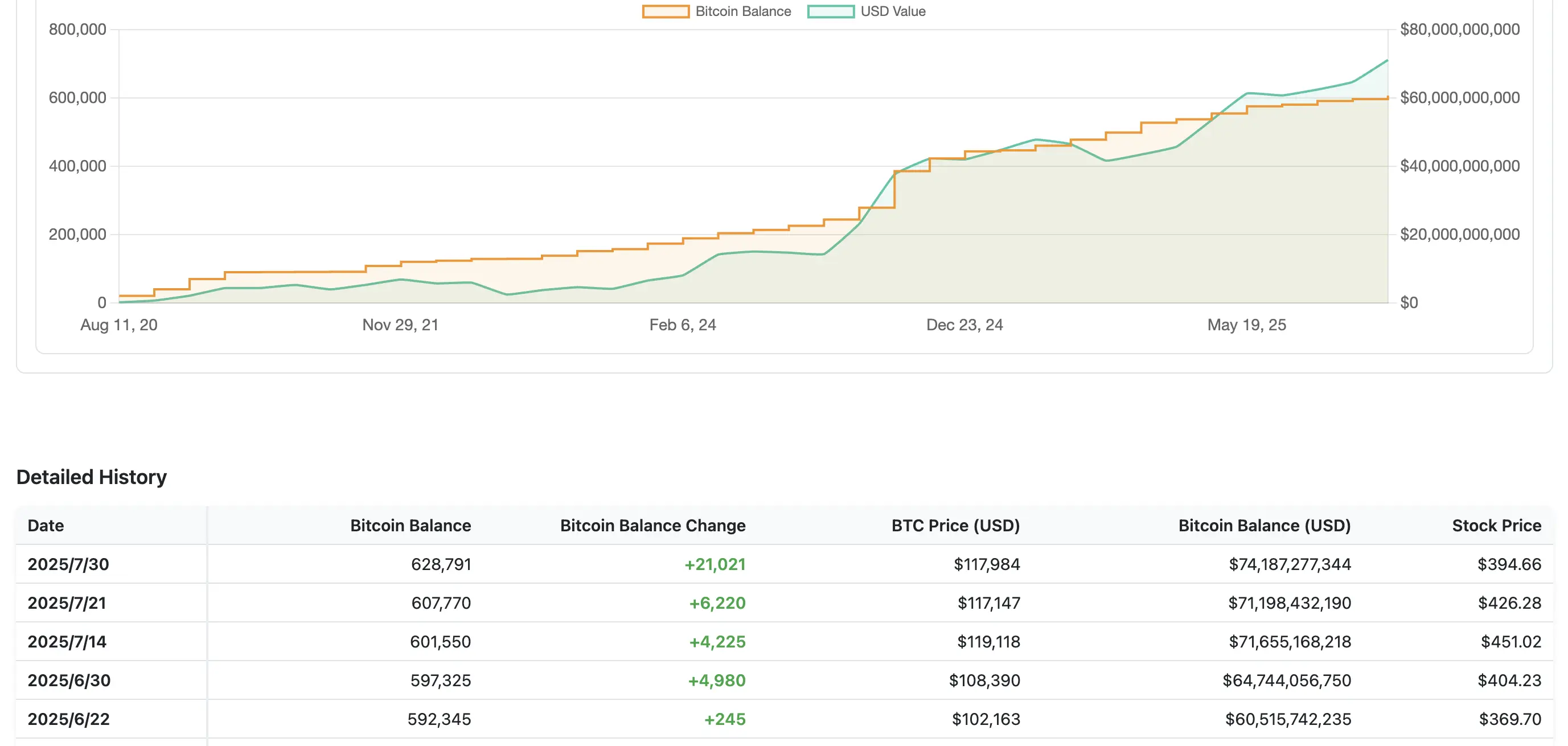
5. Crypto Stock Tracker
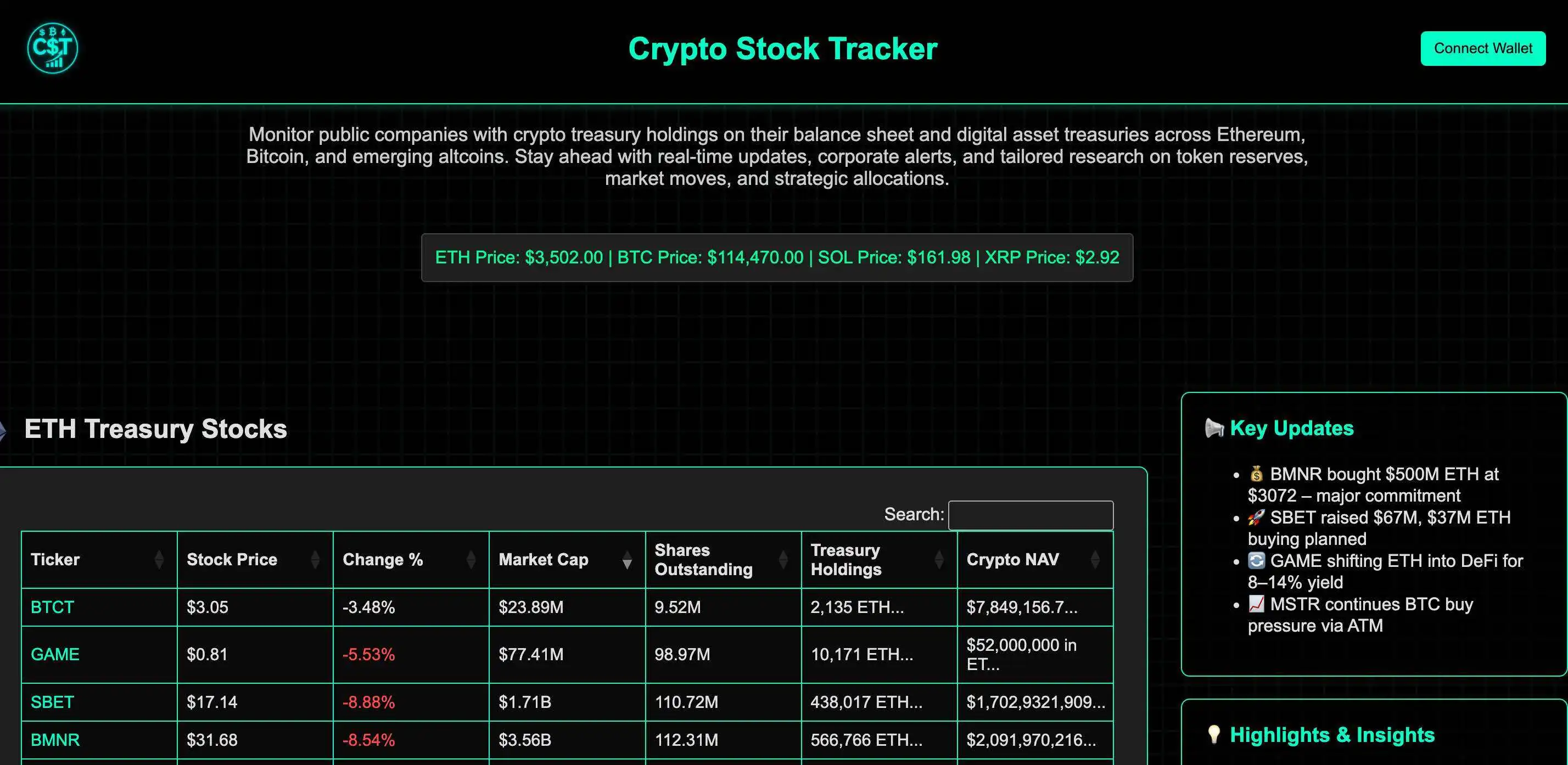
Introduction: The Crypto Stock Tracker data table includes stock ticker, stock price and daily price fluctuations, market capitalization and circulating shares, the number of held crypto tokens, and total value. It currently covers BTC, ETH, SOL, and XRP reserve companies, with a relatively large number of recorded reserve companies for each token. The right side of the interface has recent accumulation news and the latest news on upcoming crypto reserve companies' accumulation, as well as recent updates from the platform.
Evaluation: The X account of Crypto Stock Tracker was created in July, established as a new data platform in response to the hot trend of crypto reserves. It has recorded a large number of crypto reserve companies, and its views on crypto reserves are relatively good. Compared to other platforms, it includes stock price and circulating share data, which is friendly for players considering buying U.S. stocks. If future updates are timely, it could be included in the future observation list for crypto reserve data.
6. cryptotreasuries.com
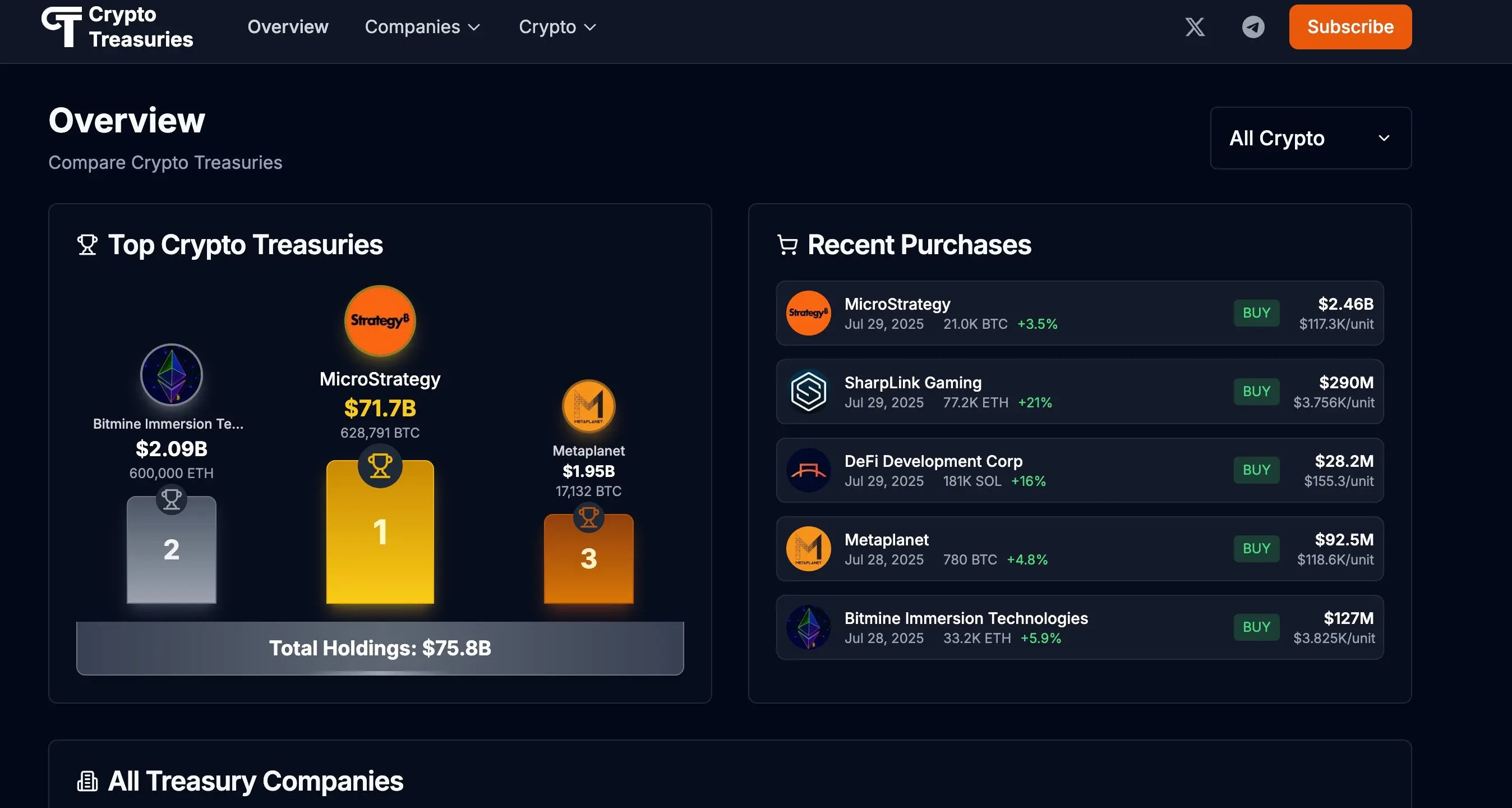
Introduction: cryptotreasuries.com is a new data and analysis platform for crypto strategic reserve companies launched in July. Currently, it has recorded a small number of crypto reserve companies, including 2 BTC reserve companies (Strategy and Metaplanet), 2 ETH reserve companies (Bitmine and Sharplink), 2 SOL reserve companies (Upexi and DeFi Development Corp), and one HYPE reserve company (Hypreion DeFi).
Its comprehensive data columns include: company name, stock ticker, number of held crypto reserve tokens and total value, stock price, market capitalization, and MNAV.
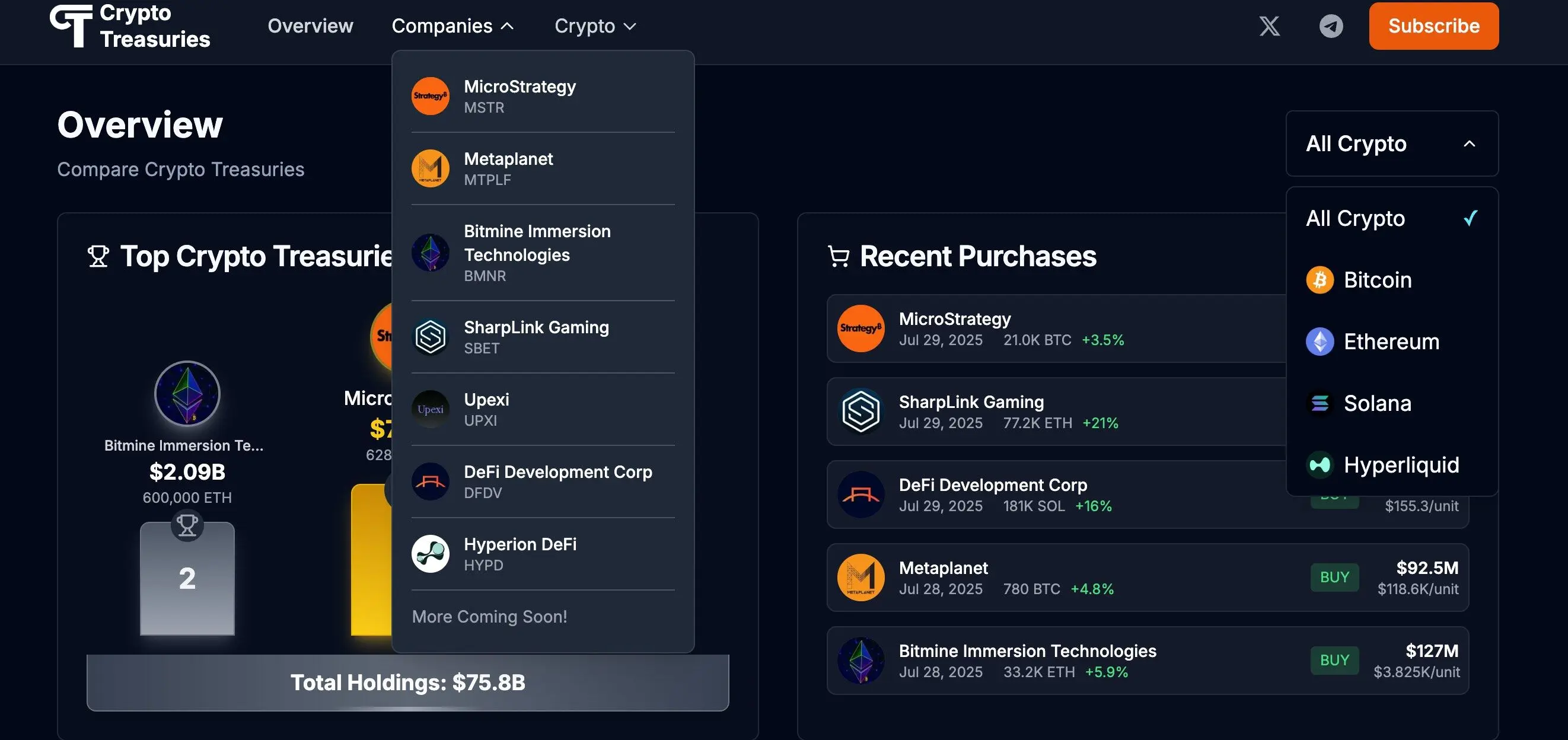
Evaluation: cryptotreasuries.com has a simple and intuitive interface, with a small number of recorded companies. Its advantage lies in the platform listing recent accumulation data and accumulation ratios of reserve companies. As a new platform, it may increase the data of more crypto reserve companies in the future, making it a "potential stock."
Conclusion
Currently, the speed at which listed companies transform or advance into entities as crypto reserve companies is relatively fast, with several new listed companies announcing purchases or upcoming BTC as strategic reserves almost every week. In addition to direct purchases, there are also methods such as financing or issuing additional shares to increase crypto reserves (after news announcements, it takes time to raise funds). Additionally, some entities that are about to merge make it difficult to calculate their market capitalization and crypto reserve quantities, making it challenging to provide particularly detailed data. There is a certain deviation in the actual total data of crypto reserve companies. Furthermore, some of the above platforms have also recorded reserve data for crypto mining companies.
Overall, it is quite good. Among the query websites/tools mentioned above, Blockworks is relatively leading, both in charts and data. Additionally, several new platforms have their own advantages in interface and data classification. Crypto Stock Tracker is the only platform among the above that has recorded XRP reserves, while cryptotreasuries.com is the only platform that has recorded HYPE. cryptotreasuries.info is the platform with the most recorded BTC reserve companies among all query tools today.
It is worth noting that none of the above platforms have updated Sharplink's ETH holdings data (yesterday, Sharplink Gaming increased its holdings by 15,822 ETH, bringing its ETH reserves to 480,204, with a total value of $1.62 billion).
免责声明:本文章仅代表作者个人观点,不代表本平台的立场和观点。本文章仅供信息分享,不构成对任何人的任何投资建议。用户与作者之间的任何争议,与本平台无关。如网页中刊载的文章或图片涉及侵权,请提供相关的权利证明和身份证明发送邮件到support@aicoin.com,本平台相关工作人员将会进行核查。




